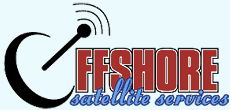Instructions for downloading, manipulating and printing OSS Temperature Charts
in WINDOWS 95/98 using Microsoft Word
To date, we know this process works with Windows 95/98 using the Microsoft Word 97, but it will probably work with earlier versions of Word and Windows in a similar manner. While it looks involved, it is actually quite easy. It is far more difficult to explain than it is to do. Try it once and you will be doing this in a matter of a few seconds with just a few clicks of the mouse.
The following steps will download the images of your choice from the OSS website (http://offshore-seatemp.com) to your computer files in Windows 95/98 and then allow you to insert them into Microsoft Word as a picture. Once in Microsoft Word, you will be able to manipulate them as either vertical (portrait) or horizontal (landscape) images on the screen, enlarge them to full page and print them.
To Download a chart to your computer files:
1. Go to the OSS website (http://offshore-seatemp.com) and navigate to the temperature chart(s) you want to print.
2. Using the "right" button on your Mouse, click on any chart you wish to print. A menu prompt will appear. Scroll down and select "Save Picture As..." and another menu will appear. Click on "Save In" (located on the top left of the menu) with the left Mouse button to indicate where you want to save the image. The easiest place to save the image is to your "Desktop." (If you use AMERICA ONLINE, you can skip this and the image will automatically be saved to the AOL "Download" folder (the program's default folder). Just remember where you saved the image so you'll know where to retrieve them.
3. Before you save the image, you must find the "Save As Type..." option on the bottom left of the menu. Click on this menu button and change the picture type to "Bitmap (*.bmp)." (This is critical because Microsoft Word can not open and recognize "Art (*.art)" images, only "Bitmap").
4. Click on the "Save" button (top right) and the chart will be saved as the OSS original name for that chart (i.e. Hudson Canyon is "C"; the Region 2 South chart is "R2S"; etc.) in the location where you specified.
5. If you want to download additional charts for printing, simply scroll to the next chart on our website and repeat procedures 2 through 4.
Importing the chart(s) into Microsoft Word:
1. Open Microsoft Word.
2. Go to "File" on the top left of the Tool Bar and open a "New" file.
3. If the chart you wish to print is a vertical image (example: Hudson Canyon chart), NO format changes to the screen page are necessary. If the chart is a horizontal image (example: Region 1 chart) then you must alter the positioning of the image. To do this, put the Mouse arrow on "File" and click. Scroll down to "Page Setup" and click. When the "Page Setup" menu appears, click on "Paper Size" and then on "Landscape." Click "OK" and the page on your screen will switch to a horizontal format and you are ready to download a horizontal chart.
4. With the correct page format on screen, put the Mouse arrow on "Insert" and click. Scroll down to "Picture" and click. Scroll over to "From Files" and click.
5. A window titled, "Insert Picture" will appear. This allows you to navigate to the file location where you saved the chart images. When you locate the bitmap (*.bmp) image file, you can highlight it and a preview of the chart will appear on the right side of the "Insert Picture" window. That way, if you have downloaded multiple charts, you can be sure you are downloading the chart you want to print.
6. Click on "Insert" at the upper left-hand corner of the window and the image will be transferred onto the page on your computer screen.
Enlarging the chart and printing:
1. To enlarge the image, first adjust the margins of the paper using the margin bars at the left and top of the page.
2. Place the cursor anywhere on the chart image and click the left mouse button. Small squares will appear at the center of the top, bottom and on both sides of the image. Place the cursor on any of those squares, click and hold the left mouse button and you can drag that side of the image to the edge of the margin. Repeat on the opposing side or bottom until the image fills the page to the limits of the margins. You now have a full-screen view of the chart.
3. Run the arrow up to the "Print" symbol (printer icon) on the upper tool bar, click and your done. The image will print full-size and in full-color.
Note: If you want to save the images in the full-size format, you can save them as Word files for future reference.

